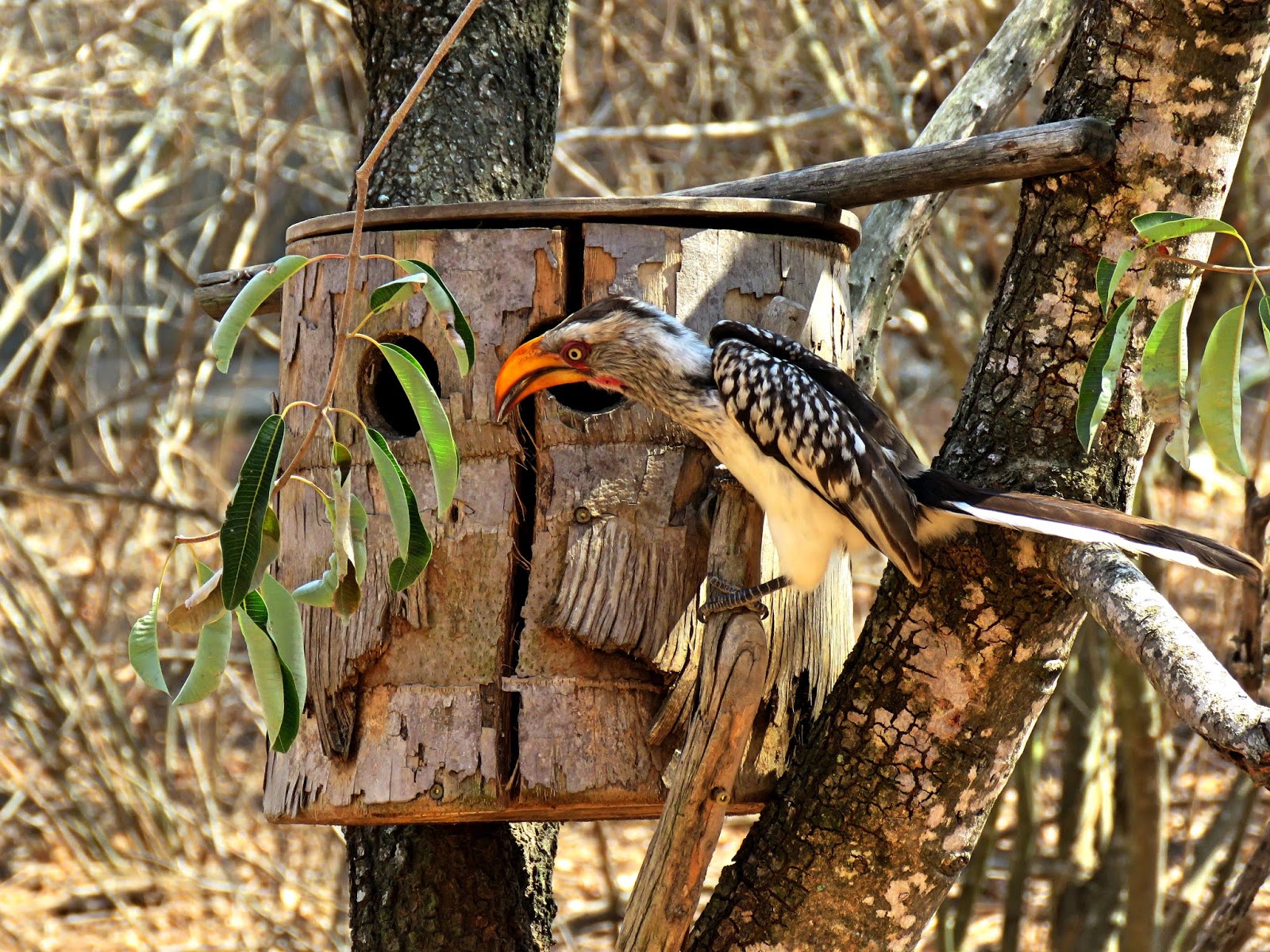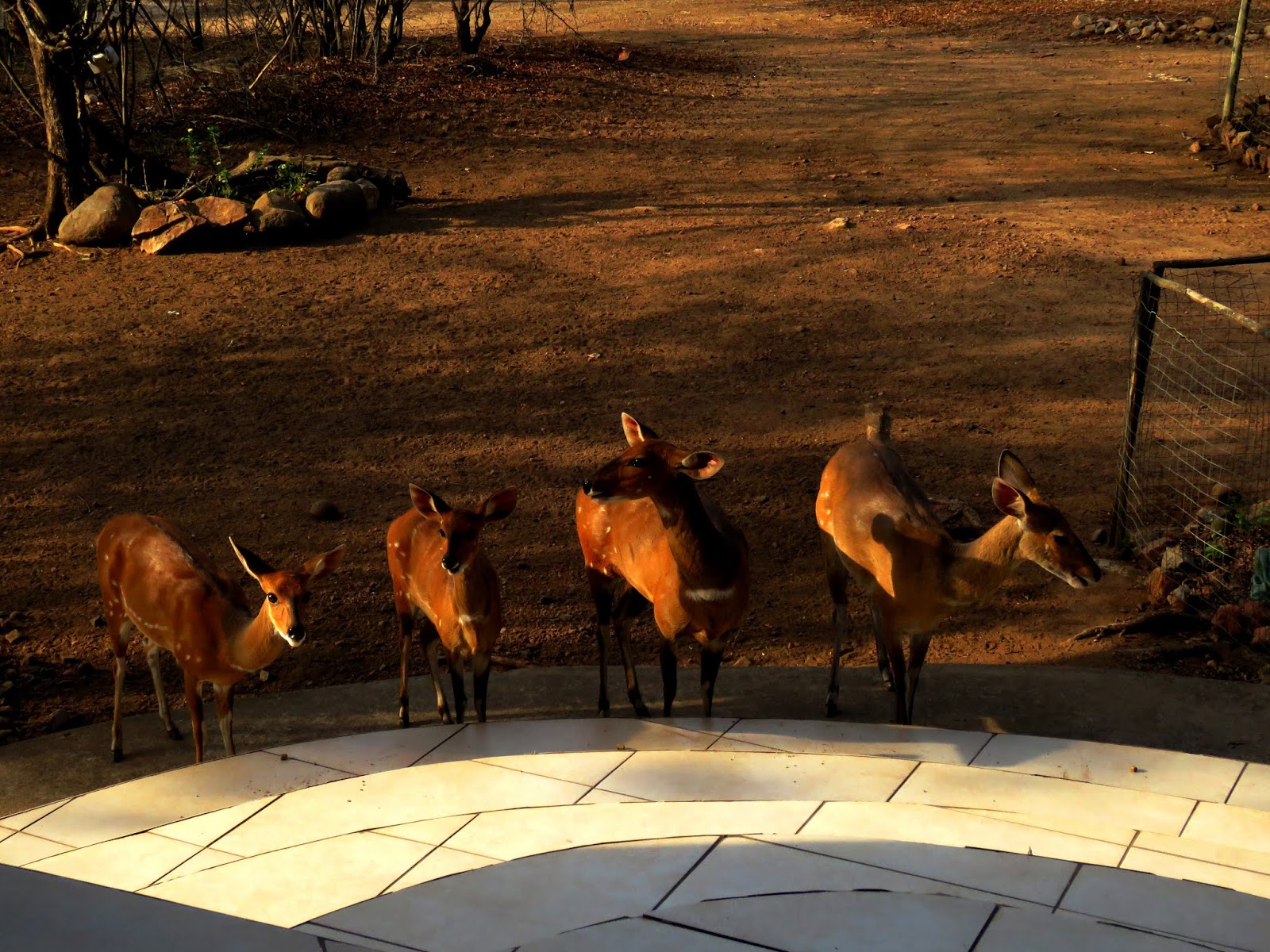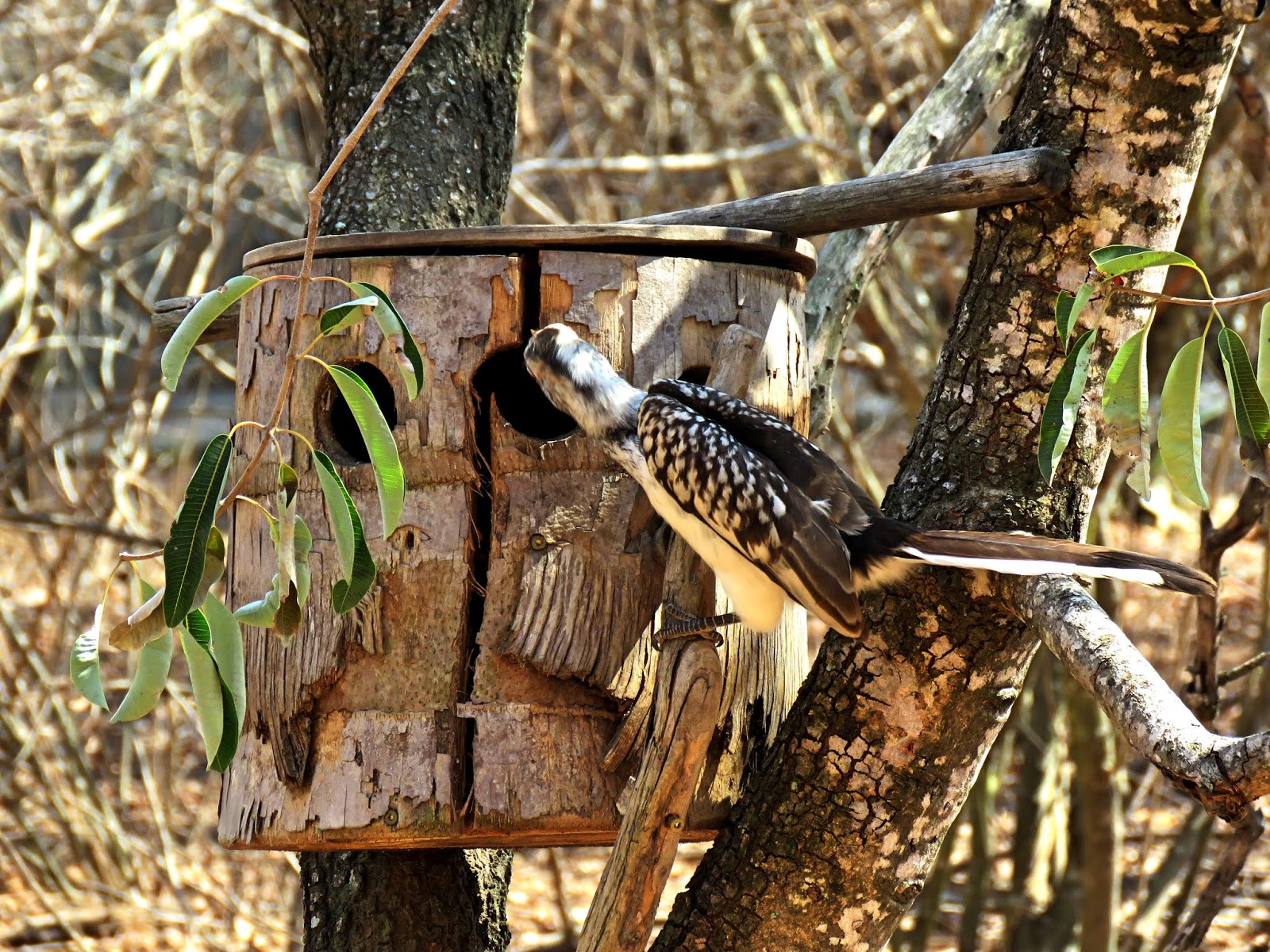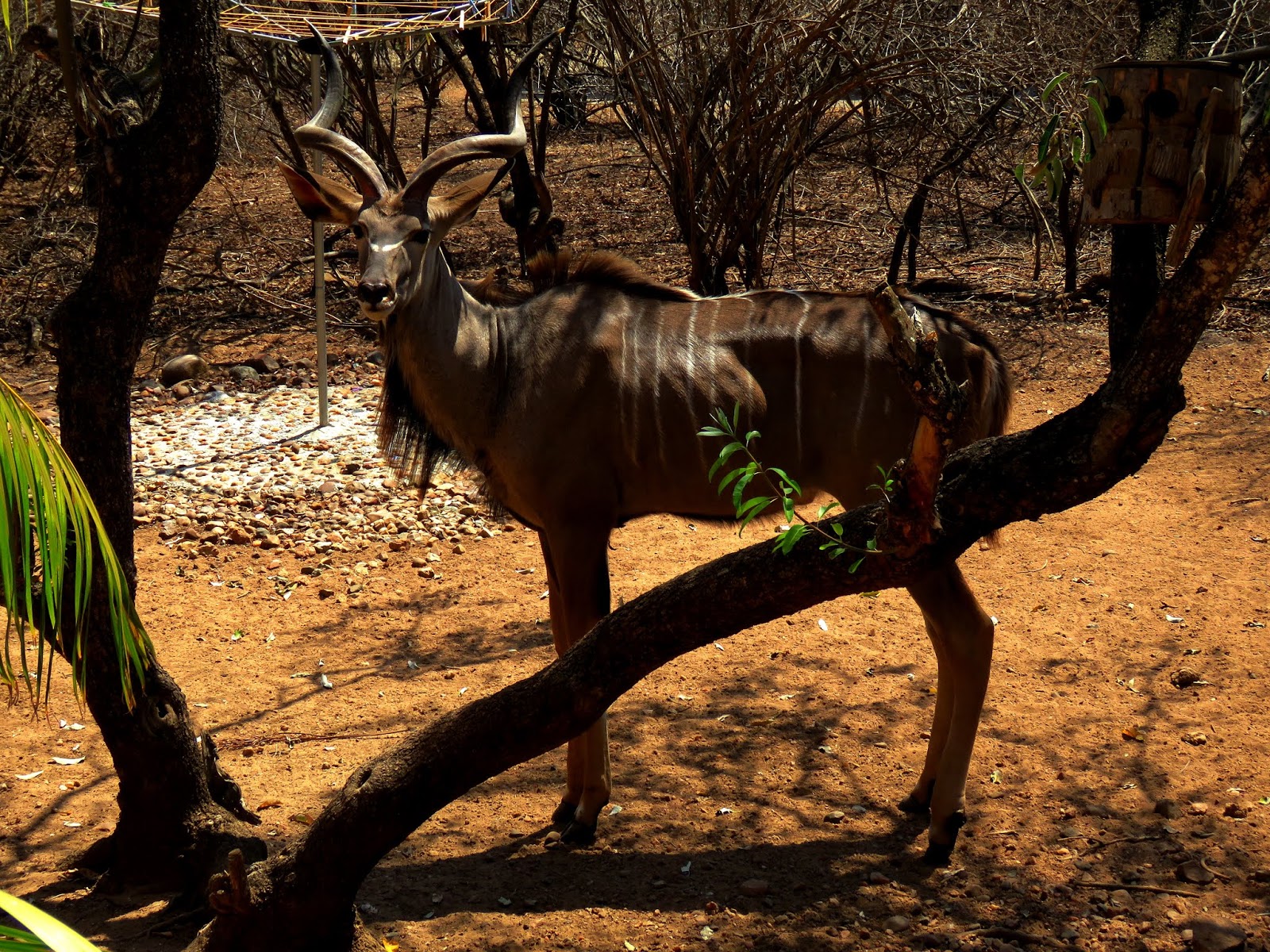 |
| A barren tree in the middle of the S130 in Kruger created an exciting scene. |
“Sighting of the Day in the Bush”
 |
| Two yellow-billed storks and one cattle egret at the far end of Sunset Dam in Kruger. |
This morning, we calculated exactly how many meals we’ll have to cook during our remaining two weeks in Marloth Park. Considering the contents of the chest freezer, we’ll only be cooking dinner eight more nights. We won’t need to purchase more protein sources.
As mentioned in an earlier post, Kathy and Don are giving us a going-away party next Friday, February 8th at their riverfront home in Marloth Park. It will be a sit-down dinner party for 12, the maximum number they can fit at their big table on their third-floor veranda overlooking the Crocodile River.
 |
| Wildebeest and her calf in Kruger. |
Unfortunately, we couldn’t invite everyone we’ve come to know and love in the park, so we chose those friends with whom we’ve become closest. Sadly, Rita and Gerhard won’t be attending the party.
They had to leave to return to the US in a hurry due to the sudden passing of a dear friend. They don’t intend to return anytime soon. We miss them already. But, Rita and I have stayed in close touch, and we have no doubt we’ll be together again, perhaps as early as in the next six months.
 |
| Zebras were grazing on new growth from recent rains. |
Also, next week on Tuesday, Kathy is hosting my pedicure at a local spa/resort. Linda will join us, after which we’ll all have lunch at the resort. It’s been so long since I’ve had a girls-only event. This will surely be quite an enjoyable event.
I haven’t had a professional pedicure in at least 10 years. I rarely afford myself such a luxury when generally it just isn’t that important to me. But doing this with the girls will make it very special and memorable.
 |
| Four male cape buffalo were lounging at the river’s edge. |
Next Wednesday is Leon’s birthday which we’ll attend at Jabula as we had for Dawn’s birthday on Tuesday evening, adding one more event to the social calendar.
On top of that, we’ll dine at Jabula the next two Saturdays, this upcoming on our own and the following with Kathy, Don, Linda, and Ken for our final time together.
 |
| Family crossing the paved road. |
We plan to dine out one more time in the next few weeks, plus spend our last night, Wednesday, February 13th, in the bush at Jabula, avoiding the cooking and clean-up at the house.
The following morning we’ll drive to Nelspruit, where we’ll spend one night at the Protea Hotel near the airport for our early morning flight on the 15th to Nairobi, Kenya.
 |
| A bull elephant we stopped to observe, hoping for a better photo. |
Yesterday, we made a reservation at a highly rated restaurant, Orange (coincidentally, like the name of this holiday home), where we’ll dine that evening on Valentine’s Day.
We informed the restaurant we’ll be writing a review and look forward to an excellent experience. Currently, this restaurant is listed as #1 out of 89 restaurants in Nelspruit on Tripadvisor. We’ll write our review here shortly after that and also at TripAdvisor.
 |
| He moved into a clearing, and we noticed he was standing with his back legs crossed. |
As for last night, we joined Uschi and Evan at their home for sundowners. As it turned out, Uschi had put together a few trays of fabulous appetizers, all of which I could eat.
We’d intended to stay for only an hour or two but ended up not leaving until 2130 hours (9:30)! The friendship and conversation were utterly delightful, and most assuredly, they’ll be at the party and staying in touch down the road.
 |
| Our dear friends Evan and Uschi, on their veranda last night. |
The meal we’d left to be cooked went uneaten, but tonight we’ll have the easy dinner. I’ve made a salad and prepared vegetables after we just returned from shopping in Komatipoort.
Enjoy some of our remaining photos from Monday’s foray into Kruger. Tomorrow, we’ll be back with all new photos and more.
 |
| Uschi with us at the veranda table. |
Happy day!
Photo from one year ago today, January 31, 2018:
 |
| View of the sea from Grytviken, South Georgia, Antarctica. Please click here for more photos. |























































































































